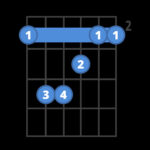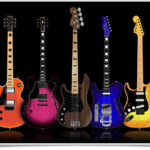Learning to play the electric guitar opens up a world of musical possibilities, from bluesy riffs to soaring rock solos. Fortunately, accessing quality Electric Guitar Training has never been easier. Gone are the days when aspiring guitarists were limited to expensive private lessons or deciphering cryptic instruction books. Today, a wealth of resources, including online lessons, detailed tablature, gear reviews, and vibrant online communities, are readily available at your fingertips.
While the guidance of a skilled guitar teacher offers undeniable advantages, it is absolutely achievable to embark on effective electric guitar training independently. All you need is a spark of passion, a healthy dose of self-motivation, and a structured approach to keep you progressing steadily.
Dive into this comprehensive guide to discover the most effective tips and strategies for successful self-guided electric guitar training.
Equipping Yourself: Essential Gear for Electric Guitar Training
The Electric Guitar: Your Foundation
While starting your musical journey with a vintage collector’s item might be a dream for the future, investing in a reliable and playable electric guitar is crucial for effective electric guitar training right from the start. A quality beginner guitar, one that stays in tune and responds well to your touch, will significantly enhance your learning experience and prevent frustration.
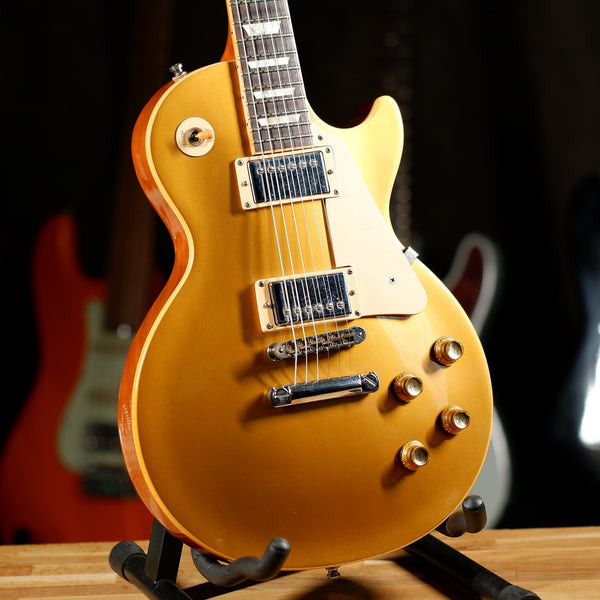 Beginner electric guitar setup
Beginner electric guitar setup
Several reputable brands offer excellent beginner electric guitars known for their quality and affordability. Fender Squier, Epiphone, and Yamaha Pacifica are consistently recommended for their playability and tone. Remember that investing a bit more upfront in a decent instrument will pay dividends in your progress and enjoyment. Steering clear of extremely cheap, generic guitars is advisable as they often suffer from poor construction and sound quality, hindering your electric guitar training.
The Power of Modeling Amps
Alongside your guitar, a functional amplifier and a dependable guitar cable are essential components of your electric guitar training setup. Modern technology offers fantastic options in the form of modeling amplifiers, which provide incredible value and versatility for beginners. These amps digitally recreate the sounds of numerous classic and contemporary amplifiers, allowing you to explore a vast sonic palette without breaking the bank.
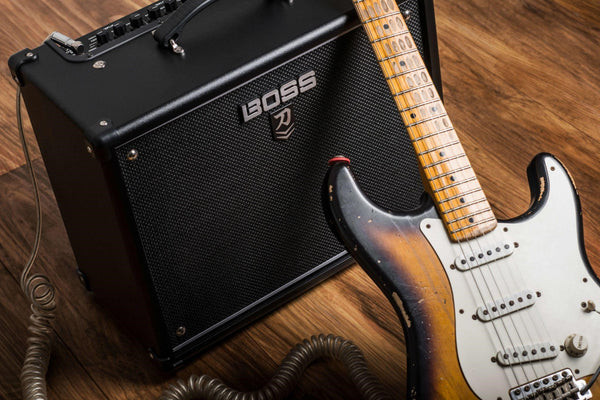 Modeling amplifier for electric guitar practice
Modeling amplifier for electric guitar practice
Modeling amps are ideal for electric guitar training because they enable you to experiment with different amp tones and effects at a fraction of the cost of owning multiple amplifiers. As you progress and develop your ear, you can always upgrade to a higher-end amplifier that captures your preferred sound.
Essential Accessories: Picks, Straps, and More
To complete your basic electric guitar training kit, you’ll need guitar picks and a comfortable guitar strap. Strap locks are also highly recommended to secure your guitar strap to the instrument, preventing accidental drops, especially when you start to move around and get into your playing!
Guitar picks are available in a wide variety of shapes, sizes, and thicknesses. Experimenting with different picks is a great way to discover what feels most comfortable and produces the tone you prefer. Consider purchasing a pick sampler pack to explore various options and find your ideal pick style for your electric guitar training.
Understanding Your Equipment: Mastering Your Electric Guitar
A crucial aspect of effective electric guitar training is gaining a thorough understanding of your gear. Familiarize yourself with the owner’s manuals for your guitar, amplifier, and any other accessories. Knowing how each component functions will empower you to control your sound and troubleshoot any issues that may arise.
Anatomy of an Electric Guitar
Delve into the components of your electric guitar. While variations exist, all electric guitars share fundamental parts: a body, neck, frets, strings, pickups, tuning pegs, nut, bridge, and control knobs and switches.
Understanding the function of each knob and switch is vital for shaping your tone during electric guitar training. For instance, guitars like Stratocasters typically feature single-coil pickups, a five-way selector switch, and volume and tone control knobs.
Single-coil pickups, common in Strat-style guitars, consist of a single magnet wrapped in copper wire with pole pieces.
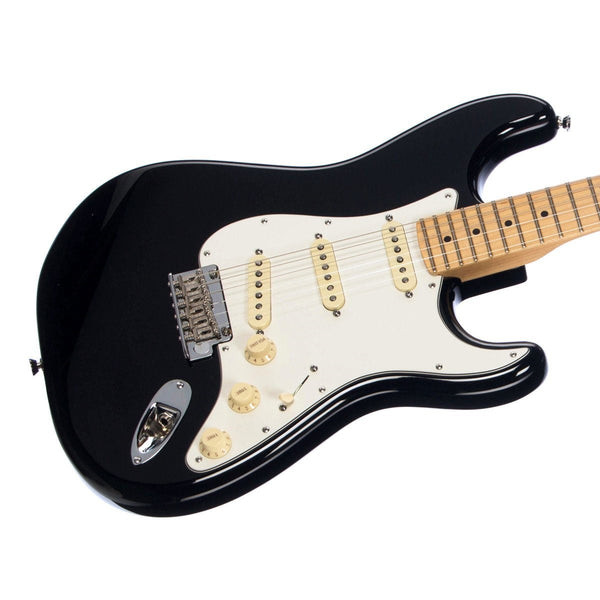 Single coil pickup on electric guitar
Single coil pickup on electric guitar
These pickups are known for their bright, clear, and articulate sound, often described as “spanky.” In contrast, humbucking pickups, found in guitars like Les Pauls and SGs, utilize two magnets wired together to produce a thicker, warmer, and more powerful tone.
Pickup Switching and Tone Shaping
Stratocaster-style guitars generally have three single-coil pickups, while Les Paul/SG types usually have two humbuckers. The pickup selector switch allows you to choose which pickups are active, offering a range of tonal variations.
On a Stratocaster, the five-way switch selects different pickup combinations. Position one (switch all the way to one side) typically activates the neck pickup (closest to the neck), while position five (switch all the way to the other side) engages the bridge pickup (closest to the bridge). The intermediate positions blend different pickup combinations.
Guitars with two humbuckers usually have a three-way switch: neck pickup, both pickups, and bridge pickup. Sometimes, these positions are labeled “rhythm” (neck) and “treble” (bridge), but in reality, either pickup can be used for rhythm or lead playing depending on your musical style and preference.
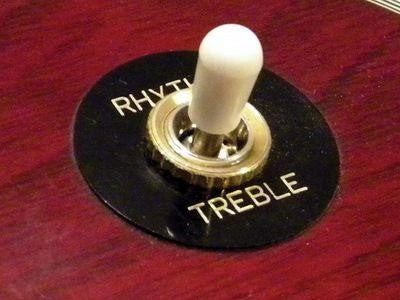 Electric guitar pickup selector switch
Electric guitar pickup selector switch
The middle switch position, engaging both pickups, provides unique tonal blending possibilities using the guitar’s volume knobs. By adjusting the volume of each pickup independently, you can create a wide spectrum of sounds and textures, enhancing your electric guitar training and creative exploration.
Tuning and String Maintenance
Learning to tune your guitar accurately is a fundamental skill for electric guitar training at all levels. Fortunately, numerous user-friendly smartphone apps are available for guitar tuning. Clip-on tuners, which attach to the guitar’s headstock, are also inexpensive and highly convenient, especially for quick tuning adjustments during practice or performance. Pedal tuners, integrated into your effects pedal setup, are another professional option, typically placed at the beginning of your signal chain.
Understanding the concept of a signal chain is important if you plan to use effects pedals. The signal chain is the path your guitar’s audio signal travels through your pedals before reaching your amplifier. While pedal order can be a matter of personal preference, placing a tuner pedal first is a common practice.
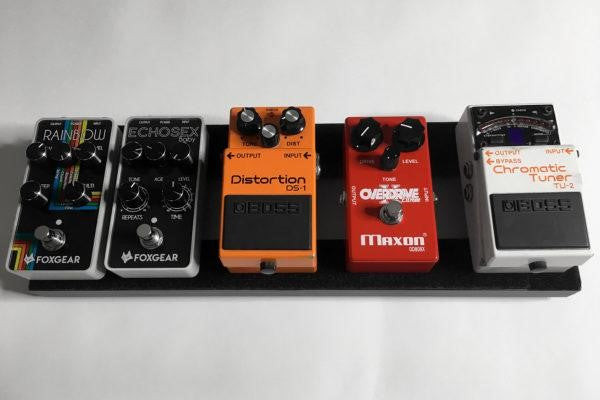 Clip-on tuner for electric guitar
Clip-on tuner for electric guitar
Mastering the art of changing your guitar strings is another essential skill for electric guitar training. Numerous online video tutorials provide step-by-step instructions. Experiment with different string gauges (thicknesses) and materials to find what suits your playing style and preferences. Lighter gauge strings are generally easier for beginners to play, bend, and fret, while heavier gauges can offer a thicker tone and improved intonation for more experienced players. Just like guitar picks, exploring different string gauges is part of the journey in discovering your ideal sound and feel.
Deciphering Guitar Music: Tabs and Chord Charts for Electric Guitar Training
The most accessible entry point to learning songs and building your electric guitar skills is through guitar tablature (tabs) and chord charts. You don’t need to read traditional musical notation to start playing electric guitar! These simplified systems are invaluable tools for electric guitar training.
Guitar Tabs: A Beginner-Friendly Notation
Guitar tablature is a streamlined notation method specifically for guitar. It uses six horizontal lines, each representing a guitar string, mirroring the six strings on your instrument.
Reading tabs is intuitive: the bottom line corresponds to the lowest string (low E or 6th string), and the top line represents the highest string (high E or 1st string). Numbers placed on the lines indicate which fret to play on that string. For example, a “1” on the top line means play the 1st fret on the high E string:
Similarly, a “5” on the bottom line indicates playing the 5th fret on the low E string:
Chord Charts: Visualizing Chords
Chord charts are another efficient method for electric guitar training, particularly for learning songs. Many chord charts include chord diagrams, visually representing the finger positions for each chord in a song.
Chord diagrams are pictorial representations of the guitar fretboard, viewed as if you’re looking down the neck from the bridge towards the headstock. The vertical lines represent the strings (low E on the left, high E on the right), and horizontal lines indicate frets. Dots on the diagram show where to place your fingers to form the chord.
Here’s a basic chord diagram for an E major chord in open position:
In this diagram, dots on the second fret of the A and D strings, and the first fret of the G string, indicate where to fret those notes. Hold down these frets with your fretting hand and strum all the strings to play the E major chord.
Practicing reading chord charts and diagrams will help you memorize chord shapes and learn songs more quickly and efficiently as part of your electric guitar training.
Harnessing the Internet for Electric Guitar Training Resources
Today’s guitarists have access to an unprecedented wealth of online information and resources. It’s truly a golden age for electric guitar training. The internet provides a vast library of lessons, tutorials, and communities. However, it’s essential to discern quality resources from less reliable ones.
Consider investing in structured online guitar courses for a more guided and effective electric guitar training experience. Following a well-designed curriculum will help you track your progress and ensure you’re learning accurate and effective techniques.
Structured Online Programs: Your Path to Progress
While platforms like YouTube offer a vast amount of free content, they often lack the structured curriculum needed for comprehensive electric guitar training. Learning from random videos can lead to a fragmented and inefficient learning process.
Instead of getting lost in a sea of unrelated videos, choose a reputable online guitar course and commit to following it consistently. Avoid jumping between different courses and methods. Focus on completing one program thoroughly before moving on to another topic.
GuitarPlayers.net offers excellent, step-by-step programs specifically designed for guitarists. Our course, ‘Guitar Exercises for Beginners’, provides a dual benefit: it guides you through effective electric guitar training and establishes a solid practice routine to accelerate your learning. The best part? You can significantly improve your guitar skills with just 10 minutes of focused practice per day! Explore the course here.
 Online guitar course platform
Online guitar course platform
Setting Goals and Building a Routine for Effective Electric Guitar Training
Self-guided electric guitar training requires self-motivation and discipline. Setting realistic short-term and long-term goals is crucial for staying focused and making consistent progress.
For example, aim to learn all five positions of the minor pentatonic scale within five months, dedicating one month to each position. This is an achievable goal that provides structure to your electric guitar training without being overwhelming.
Consistency is Key: Develop a Practice Routine
The most effective approach to electric guitar training is to establish a consistent practice routine and stick to it. Schedule a dedicated practice time each day and create a structured plan to maximize your practice sessions. Avoid simply “noodling” aimlessly for extended periods.
A sample practice routine could include: warm-up exercises, scale practice, chord practice, and song learning. You can customize this structure to align with your specific goals and learning objectives. The key is consistency – regular, focused practice is far more effective than sporadic, lengthy sessions.
The Power of Listening: Immerse Yourself in Guitar Music
Listening to music is an indispensable part of becoming a skilled musician. To excel in electric guitar training, you need to develop an ear for great guitar playing and understand what masterful guitar work sounds like.
Furthermore, constantly seeking out new music will fuel your inspiration and motivation to continue developing your skills. Stagnant listening habits can often lead to plateaus in your guitar progress.
Learn from the Masters: Interviews and Performances
Seek out interviews with your favorite guitarists to gain insights into their musical approaches and philosophies. Understanding their thought processes and influences can profoundly impact your own electric guitar training.
Watch live performances and, whenever possible, attend concerts to experience the energy and dynamics of live guitar playing firsthand. Observing how musicians interact with their instruments and audiences in a live setting is an invaluable learning experience.
Mastering the Fundamentals: Building Blocks of Electric Guitar Training
Regardless of your preferred musical genre, mastering basic open position and barre chords, along with fundamental major, minor, and pentatonic scale patterns, is essential for effective electric guitar training.
These are the foundational building blocks of guitar technique. Developing a strong grasp of these fundamentals will provide you with skills applicable to virtually any playing situation. Moreover, understanding basic chords and scales enables you to communicate effectively with other musicians about music and guitar playing.
Chords in Every Key: Expanding Your Harmonic Vocabulary
Learning to play guitar chords in all twelve keys is an important step in your electric guitar training. The guitar is particularly well-suited for this due to the CAGED system, which allows you to move chord shapes across the fretboard to create chords in different keys.
For example, the “C shape” barre chord, rooted on the 3rd fret of the A string, creates a C major chord. Moving this same shape up two frets, with the root now on the 5th fret of the A string, transforms it into a D major chord. This principle applies to all shapes within the CAGED system.
Scales: Unlocking Melodic Fluency
Just as chords have movable shapes, scales also have movable patterns on the guitar fretboard. For instance, learning one pattern of the minor pentatonic scale enables you to play it in all twelve keys simply by shifting the pattern up or down the neck to match the desired key.
The same principle applies to major and minor scales. This “movability” makes learning scales on the guitar significantly more accessible compared to instruments like the piano, where each scale requires a unique fingering. This is a huge advantage for electric guitar training.
Developing Specific Techniques: Expanding Your Guitar Toolkit
Identify the signature techniques of your favorite guitarists and consciously practice incorporating them into your own playing. Essential techniques include slides, bends, hammer-ons, pull-offs, legato phrasing, sweep picking, tapping, and more.
Explore different picking styles, such as alternate picking, hybrid picking, and fingerpicking. The world of guitar techniques is vast and diverse. Focus on mastering the techniques that resonate most with your musical interests and goals as part of your electric guitar training.
Learning Songs: Internalizing the Language of the Guitar
As a beginner guitarist, learning a wide range of songs, riffs, licks, and solos is highly beneficial for electric guitar training. This is the most effective way to internalize the “language” of the guitar fretboard and develop an intuitive understanding of how music is constructed on the instrument.
Like any language, guitar playing has its characteristic idioms and patterns. Learning songs exposes you to these guitar-specific mannerisms early on, allowing you to internalize and master them. This foundation then allows you to build upon these techniques and develop your own unique playing style.
The Metronome: Your Rhythm Training Partner
Utilizing a metronome is a game-changer for improving your timing and rhythmic precision in electric guitar training. A metronome is an invaluable practice tool with numerous applications. Fortunately, many excellent metronome apps are available for free on smartphones.
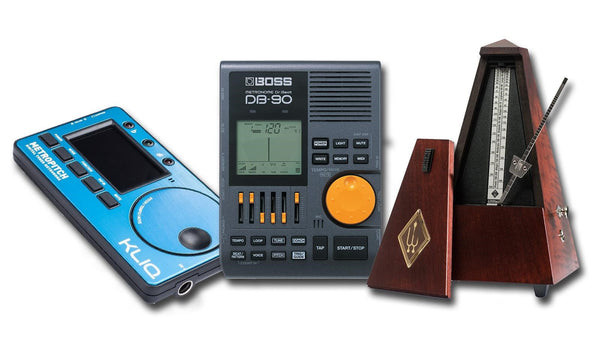 Metronome app for guitar practice
Metronome app for guitar practice
Metronome Practice Ideas
The most basic metronome practice involves setting it to click on all four beats of the bar. However, you can vary your practice by setting the metronome to click on just one beat or on the off-beats to develop your internal sense of rhythm and timing.
Think of metronome practice as rhythmic exercise. The more you work with it, the stronger and more ingrained your sense of time and rhythm will become, significantly enhancing your electric guitar training.
Record Yourself: Objective Self-Assessment in Electric Guitar Training
Use a voice memo app on your phone or a recording device to record yourself practicing electric guitar. Critically listen back to your recordings to identify areas for improvement and recognize aspects of your playing that you’re progressing well in.
Reflection and Progress
Listening to recordings of your playing is a powerful tool for self-reflection and assessment in electric guitar training. Honest self-evaluation while listening will accelerate your progress and help you refine your skills more effectively.
Embrace Music Theory: Unlocking Deeper Musical Understanding
Don’t be intimidated by music theory. Music theory is simply a framework of concepts, tools, and terminology that musicians use to describe musical patterns and tendencies and communicate with each other about music. Embracing music theory is a valuable asset in your electric guitar training.
Music Theory: Expanding Your Musical Horizons
Many self-taught musicians mistakenly believe that learning music theory will stifle their creativity or make their playing too rigid. The reality is quite the opposite.
Avoiding music theory actually limits your musical understanding and potential. By embracing music theory, you unlock a vast universe of musical knowledge and gain a deeper understanding of how music works, enriching your electric guitar training and creative expression.
Find Your Guitar Community: Connect and Grow
Perhaps the most vital aspect of successful self-guided electric guitar training is finding a community of fellow guitarists and musicians you enjoy interacting with and learning from.
Connecting with other musicians is the best way to stay inspired, discover new ideas and concepts, and keep your electric guitar training engaging and motivating.
 Guitar community and jam session
Guitar community and jam session
Whether your community is primarily online or in-person, having a network of guitarists to connect with will accelerate your progress and help you stay focused on your musical journey. Who knows, you might even find bandmates and start your own musical project!
Consider Online Guitar Courses: Structured Learning for Faster Progress
While it’s entirely possible to learn electric guitar independently with the wealth of resources available today, remember that YouTube alone might not be the most efficient path for electric guitar training. YouTube often lacks the structured guidance needed for systematic learning, potentially leading to a disjointed and slower learning curve.
Investing in a quality online guitar course provides structure, a clear learning path, and expert guidance, leading to faster progress and a more enjoyable electric guitar training experience.
Consider exploring our course, ‘Guitar Exercises for Beginners’, at guitarplayers.net. This comprehensive course features 7 chapters and over 100 exercises designed to take you from beginner to confident guitarist. The unique aspect of this course is that you can achieve significant skill improvement with just 10 minutes of daily practice. Explore the course here.

